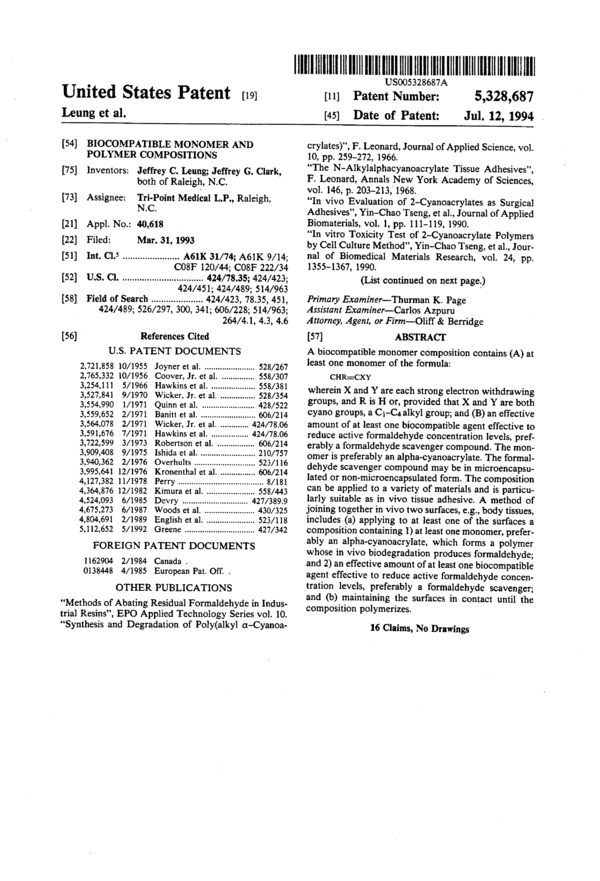Biocompatible Monomer and Polymer Composition
A biocompatible monomer composition contains (A) at least one monomer of the formula:
CHR=CXY
wherein X and Y are each strong electron withdrawing groups, and R is H or, provided that X and Y are both cyano groups, a C1-C4 alkyl group; and (B) an effective amount of at least one biocompatible agent effective to reduce active formaldehyde concentration levels, preferably an alpha-cyanoacrylate. The formaldehyde scavenger compound may be in microencapsulated form. the composition can be applied to a variety of materials and is particularly suitable as in vivo tissue adhesive. A method of joining together in vivo two surfaces, e.g., body tissues, includes (a) applying to at least one of the surfaces a composition containing 1) at least one monomer, preferably an alpha-cyanoacrlylate, which forms a polymer whose in vivo biodegradation produces formaldehyde; and 2) an effective amount of at least one biocompatible agent effective to reduce active formaldehyde concentration levels, preferably a formaldehyde scavenger; and (b) maintaining the surfaces in contact until the composition polymerizes.
- Log in to post comments

